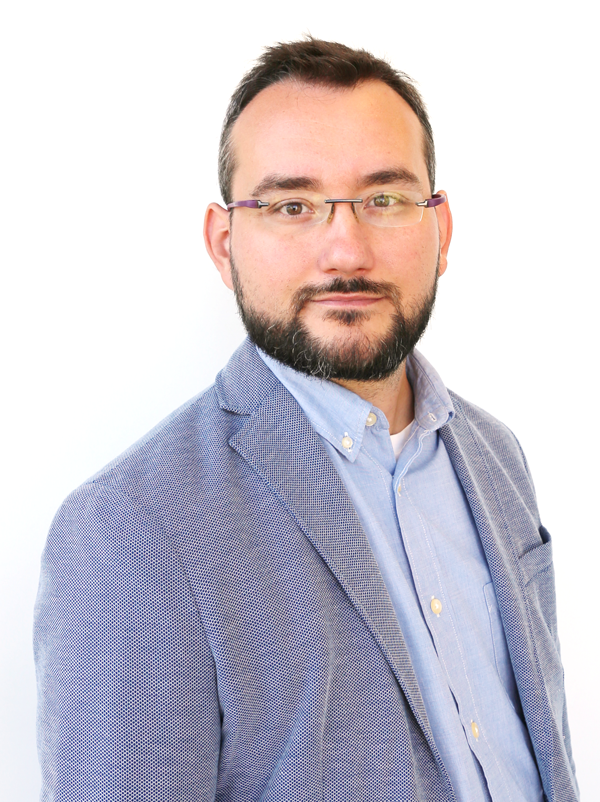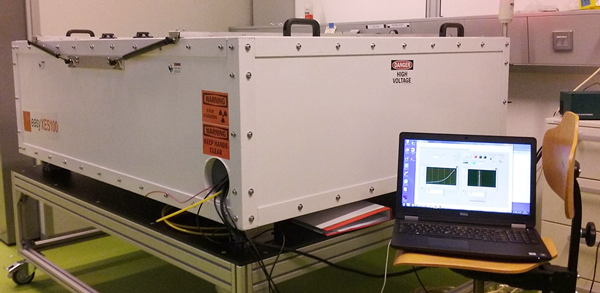NSF Grant Enhances Sustainable Energy Research with X-Ray Absorption Spectroscopy

Aug. 26, 2021 – Critical clues to sustainable energy production and decarbonization of manufacturing processes lie inside a seemingly nondescript steel box. Inside is a benchtop X-ray absorption fine structure (XAFS) and X-ray emission spectrometer (XES), a new advanced optical instrument to be installed in the Irvine Materials Research Institute (IMRI) facility at UC Irvine.
The XAFS/XES instrument will help researchers develop novel functional nanomaterials for breakthrough energy applications, including net-zero carbon reduction, solar energy conversion, sensors and advanced nuclear systems. It is supported by an NSF Major Research Instrumentation (MRI) program grant ($499,488) that includes funds for STEM outreach to underserved students.
“I am very excited about winning the NSF-MRI grant,” said Erdem Sasmaz, principal investigator and assistant professor of chemical and biomolecular engineering. “Decarbonization of the transport, manufacturing and power generation sectors is a challenging task that depends on breakthrough technological improvements. The XAFS/XES instrument will enhance the development of novel functional nanomaterials for sustainable energy production and decarbonization of manufacturing.”
The instrument’s X-ray absorption spectroscopy (XAS) is a widely used technique for identifying the local electronic and atomic structure of gases, solutions and solids. Analysis of the element-specific absorption spectra provides information about oxidation state, molecular geometry, multi-shell coordination numbers and bond length of samples.
Synchrotron light sources are the gold standard for XAS. However, recent developments in solid-state detectors, low-power X-ray tubes based on nanotube field emission electron sources, spherically bent crystal analyzers, and monochromator technology have led to the development and application of benchtop XAFS spectroscopy.

The XAFS/XES instrument will be used by researchers in multidisciplinary projects in catalysis, electrochemistry, photoelecrochemistry, chemiresistive sensing, quantum computing and efficient use of nuclear fuels. The instrument will complement the in situand in operandocharacterization tools that are already available at UCI and provide invaluable information about the local dynamic environment of a material along with information about phase, surface chemistry, structural change and adsorbate chemistry.
Typically, researchers must visit synchrotron light sources at a U.S. National Laboratory to perform high-resolution XAFS experiments. The proposal process, travel costs, restrictive safety protocols and limited amount of time available often limits experimentation to introductory and routine experiments. In contrast, the accessibility of the XAFS/XES instrument at UCI will offer researchers a much faster turnaround time for analysis and allow them to generate more data from longer experiments.
The instrument at UCI will also be used in undergraduate and graduate level courses and workshops to perform experiments. Students will actively participate in data collection, allowing them to integrate theory and advanced data analysis. Through summer programs at UCI, local high school and undergraduate students will participate in facility tours and workshops to learn about various applications of the instrument in energy research and how spectroscopic techniques are pioneering developments in nanomaterials research. The outreach efforts will be designed to attract students from diverse backgrounds to UCI by providing underserved students with an opportunity to do research and encouraging them to pursue a STEM degree.
“This is actually one of my dream instruments,” said Sasmaz. “It will affect my research tremendously. This new instrument will make XAS a workhorse for my research, and I will be able to carry out in operando experiments for the development of advanced functional nanomaterials in sustainable energy production. Additionally, I have developed an Applied Spectroscopy course for graduate and undergraduate students and have been teaching it for the past two academic years. The XASF/XES instrument will immediately benefit students by providing them with hands-on laboratory experience in both absorption and emission spectroscopy.”
The XAFS/XES instrument will be installed and available in IMRI in early 2022, depending on various factors including the COVID-19 pandemic. Co-principal investigators are Bihter Padak, assistant professor of mechanical and aerospace engineering with a joint appointment in chemical and biomolecular engineering and associate director of the UCI Combustion Lab, and Matt Law, associate professor of chemistry with a joint appointment in chemical and biomolecular engineering.
Padak said, “We have an excellent team at the Samueli School of Engineering that studies various aspects of decarbonization and the capabilities of this instrument in terms of material characterization will bring the research to a new level.”
– Tonya Becerra
